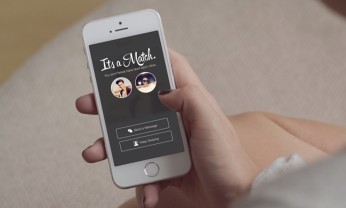
By: Tatum Williams,
It is easy to confirm a Tinder profile’s authenticity when the person is someone you know. When this happens, and it often does considering the app boasts an estimated 50 million users[1], beneath the initial awkwardness of swiping across a familiar face, there is assurance. The assurance comes from knowing that the person beyond that profile is who they say they are.
With the slogan, “It’s like real life but better,” Tinder’s innovative design allows users to connect with nearby people using location-based software and basic Facebook information, such as mutual interests and friends.[2] Tinder and apps similar to it, such as Hinge, require this social authentication primarily to put users’ minds at ease over the likelihood of encountering a fake profile.[3] But such is not always the case. Of those who utilize dating apps and online dating, roughly 54% felt that some users seriously misrepresented themselves in their user profile.[4] Evidence of that is the modern phenomenon of “catfishing.” Catfishing, which is defined as the intentional deception of another through the use of a fake profile, typically done in hopes of achieving a romantic connection,[5] has exploited the rise of social media and dating apps. It is now even easier for someone to fabricate a dating profile.[6] Needless to say, the prevalence of dating apps has facilitated deceptive behavior given the availability of anonymous communications.[7]
More often than not, misrepresentations of this nature are harmless. While some people may exaggerate or lie about their preferred television shows or movies, others execute more strategic lies, often pertaining to their age, weight, height, personality traits, interests, monetary status, career aspirations, and even past relationships.[8] Most people are familiar with these kinds of misrepresentations and would agree that these lies, though wrong, are not worthy of serious legal ramifications.[9] Or are they?
This begs the question whether the legal considerations and ramifications associated with dating apps have evolved at the same burgeoning rate as the apps themselves. Unfortunately, the answer is no; dating app users have a low likelihood of success in holding a dating app liable for any harm that the user experiences from his or her interactions with other app users.[10] Most dating apps have combated these potential claims by disclaiming all warranties and representations with regards to other users in their terms of use agreements.[11] And the immunity does not stop there: The Communications Decency Act protects apps from liability based on content posted by users, such as the aforementioned catfishing scams or other misrepresentations.[12] Under the Communications Decency Act, “no provider or user of an interactive computer service shall be treated as the publisher or speaker of any information provided by another information content provider.”[13]
Tinder is relatively new—it was only created in 2012[14]—so not many statistics have been conducted on the number of fake profiles currently in existence. With that said, the rapid pace at which the user base is experiencing growth preserves the potential for misrepresentations and catfishing. Despite the protections dating apps and other forms of online dating services receive, several states have made lying on these platforms a criminal offense.[15] This would seem to suggest that the trend of remaining unpunished for misrepresentation or catfishing is diminishing.[16] But until cyberspace governance evolves to the level that dating apps have, it appears that users’ best defense is to swipe wisely.
[1] See Alexis Kleinman, The Typical Tinder User Spends 77 Minutes Tinding Every Day, Huffington Post (Oct. 31, 2014), http://www.huffingtonpost.com/2014/10/31/77-minutes-tinder_n_6082468.html.
[2] See Jessica L. James, Mobile Dating in the Digital Age: Computer-Mediated Communication and Relationship Building on Tinder (May 2015) (unpublished Master of Arts thesis, Texas State University) (on file with author).
[3] See Lindsay Hildebrant, Media and Self Representative Perceptions: Deception in Online Dating (May 2015) (unpublished undergraduate Honors thesis, Pace University) (on file with Pforzheimer Honors College, Pace University).
[4] See James, supra note 2.
[5] See Krystal D’Costa, Catfishing: The Truth About Deception Online, Scientific American Blog (April 25, 2014), http://blogs.scientificamerican.com/anthropology-in-practice/catfishing-the-truth-about-deception-online/#.
[6] See Keith Wagstaff, Hook, Line and Tinder: Scammers Love Dating Apps, NBC News (April 11, 2014, 5:36 PM), http://www.nbcnews.com/tech/security/hook-line-tinder-scammers-love-dating-apps-n77256.
[7] See Geelan Fahimy, Liable for Your Lies: Misrepresentation Law as a Mechanism for Regulating Behavior on Social Networking Sites, 39 Pepp. L. Rev. 2 (2012).
[8] See id.
[9] See id.
[10] See Greg Mitchell, Digital Dating: Legal Matters to Consider Before Swiping Right, Missouri Lawyers Help Blog (Feb. 12, 2016), http://missourilawyershelp.org/digital-dating-legal-matters-to-consider-before-swiping-right/
[11] See id.
[12] Doe v. MySpace, Inc., 528 F.3d 413, 416 (5th Cir. 2008).
[13] See Fahimy, supra note 7.
[14] See James, supra note 2.
[15] See Fahimy, supra note 7.
[16] See id.
Photo Source:
http://www.hercampus.com/sites/default/files/2015/11/02/tinder.jpg
